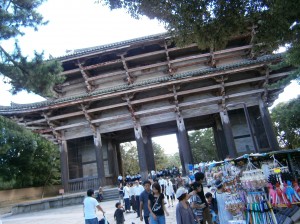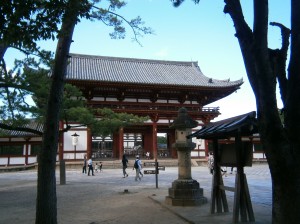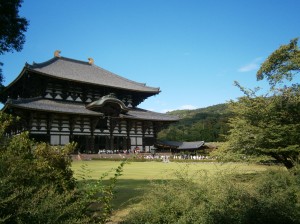December 10, 2011 by slater2
After being in Japan for a semester I look back and realize that I had no idea what Japanese culture or Japan was all about. At the beginning, I honestly had no idea how I should represent Japanese people, but I have learned a lot and completely opened my mind due to taking this class.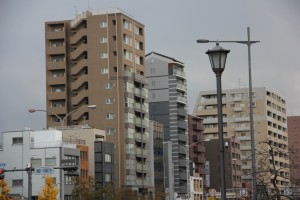
About halfway through the semester, after watching a photography film in visual anthropology class, I began to realize that all of my posts and pictures were from my point of view. I realized that I actually never took enough time to honestly understand the Japanese side of it. I began to understand that its really hard for me to understand a different side of things if I bring my own ideas into the equation because I think like an American, so I began to take pictures without thinking just snapping what was in front of me and not what I thought was good.
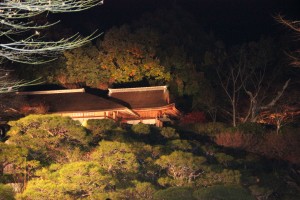
At first, the things that i realized about Japan was that were large buildings and small beds, but that was because I truly had no idea of what i was actually looking at. Now that I have been here for a while and taken visual anthropology I understand a lot more. Japan and japanese culture is a mixture of old traditions and new trends. There is no distinct Japanese style because their style is for ever changing and adaption to new styles. Japan is a blend of big cities and country side villages.
Japanese culture is something that is really complicated to explain, so hard that even native people can’t explain it, but japanese culture is really exciting to explore. Im glad i took this class because it helped me gain a liking in culture and photography and helped me truly understand how to present a group of people from their perspective.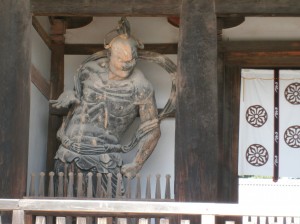
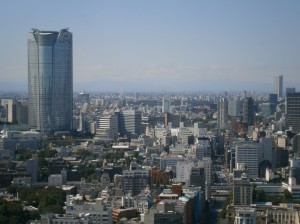
Posted in Uncategorized | 1 Comment »
December 6, 2011 by slater2
What is culture and how does one go about defining his or her own culture? When you live in a culture seldom do you even stop to think about what actually defines it. This a couple of Japanese students were briefly interviewed by me to figure out how they define their culture. To start off the interview, I asked the students a question that seems simple, but when its your turn to answer it gets extremely confusing. I asked the Japanese students to define Japanese culture. At first they thought it would be easy, but then they realized that they didn’t actually know how to explain their culture. Eventually, every single student expressed a different view or side on what Japanese culture actually was, but none of these sides where things that I had even thought of. After they gave me the definition of culture, I asked them top elaborate on it and give me some specific examples of the phrase or word they picked to describe their culture. As they began to elaborate on what the phrase they used to describe Japanese culture, I began to understand their views. The more they began to talk about their culture and finally understand how they felt, the more emotions poured out onto the camera. I asked the students what they thought were negative and positive aspects of Japanese culture. I asked them if there were certain things about the culture that they would like to change. Then finally, I asked them if them what things they really liked about the culture that they really like and would want other cultures to pick up on. In the end, the students gave their own view of Japanese culture and I finally got a different perspective of Japanese culture. Watching the videos that are linked below, will make you realize that culture is very difficult to understand and brings out a ton of emotions in people.
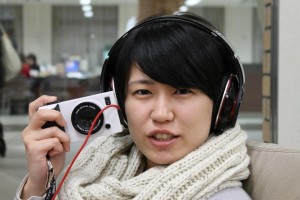 Hiromi\’s Interview
Hiromi\’s Interview
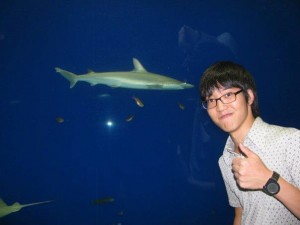
Posted in Uncategorized | 1 Comment »
December 2, 2011 by slater2
Arashiyama is located in Kyoto, Japan. To get to Arashiyama, you can travel by either the Hankyu Arashiyama Line or the Keifuku Electric Railroad. At this time of the year, Arashiyama is a beautiful place where you can look at all the changing leaves on the mountain. The area itself has many attractions to be viewed.
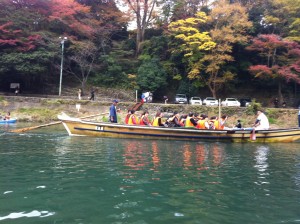 You and a group of friends can decide to get together in a boat and row down the Oi River.The boat itself cost 1400 yen for an hour of rowing, but it is worth it because it enables you to view the beautiful area around the river and also get an opportunity to watch the monkeys drink water and interact around the river. If you aren’t up for actually rowing a boat, you can get into a boat where you will be rowed down the river with a group of people. A boat will dock on the side of yours during the trip down there river and you will be able to buy snacks and refreshments.
You and a group of friends can decide to get together in a boat and row down the Oi River.The boat itself cost 1400 yen for an hour of rowing, but it is worth it because it enables you to view the beautiful area around the river and also get an opportunity to watch the monkeys drink water and interact around the river. If you aren’t up for actually rowing a boat, you can get into a boat where you will be rowed down the river with a group of people. A boat will dock on the side of yours during the trip down there river and you will be able to buy snacks and refreshments.
You can also climb up the mountain to its summit and view the area from above where you can see a fusion of colors among the trees on the other side and look down on the river at a beautiful display of scenery. After climbing the
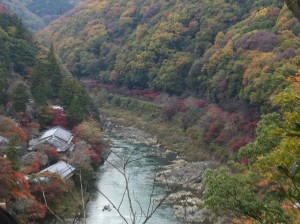
mountain, you can go into Iwatayama Monkey Park. The monkey park is one of the more famous attractions at Arashiyama and at this park, you can feed the monkeys that live around the mountain and interact with them.
After stopping by the Iwatayama Monkey Park, you should take a visit to Tenryu-ji. Tenryu-ji is a temple founded in 1334 and is the main temple of the Rinzai sect of Buddhism in Kyoto. Tenryu-ji is considered to be one of Kyoto’s Five Great Zen Temples and is listed as one of Kyoto’s UNESCO World Heritage Sites.
Here is a link to more exciting stuff in Arashiyama.
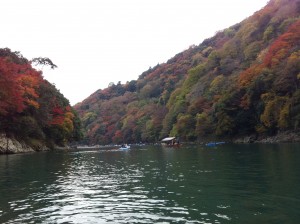
Posted in Uncategorized | Comments Off
November 8, 2011 by slater2
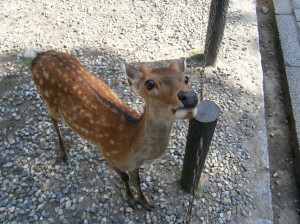
Nara is a beautiful city in Japan, that served as the countries capital during the Nara period of Japanese history. During this period of time, Buddhism was on a rise and several temples were ordered to be constructed. The Emperor Shomu, ordered that the Todaiji temple be built and also that a big Buddah statue be built.
When you are going to the Todaiji Temple, before going through the gate you will encounter countless deer. The deer are generally hungry and there are vendors around that have shikasembei,or crackers that you can feed to the deer. Be careful because once you buy the shikasembei, a massive amount of deer will quickly run after you so that you can feast on your crackers.
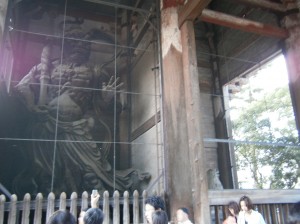
After feeding and observing the deer, you can then walk through the gate and you will be in route to the Todaiji Temple. When you walk through the gate, you will be greeted by the gate guardians Agyo and Ungyo. Once you walkthrough the gate, the you will be on a trail to the booth where you can buy a ticket to enter the beautiful temple. The tickets are 500 yen for adults and 300 yen for children. After getting your ticket, you walk to the right and you can get you first view of the temple. You continue on and get your ticketed stamped and you are almost ready to enter the temple. The next step is to cleanse your hands with the water and then hike up the stairs of the temple.
The Todaiji Temple is the largest wooden building in the world. And it houses the Nara Daibutsu, which is the largest bronze statue in the world. The Daibutsu is a National Treasure and has a height of approximately 15 meters. For more information please visit the following
link.
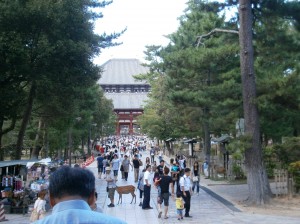
Posted in Uncategorized | 1 Comment »
October 24, 2011 by slater2
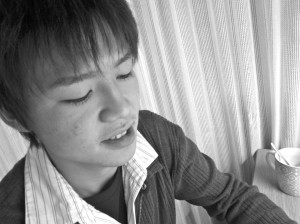 Throughout life, you occasionally build a bond and special friendship with people that will never be forgotten and I have finally done this in Japan. Meet Shinpei Tamiya. Shinpei is a 19 year old first year student at Kansai Gaidai. He currently lives in Kansai Gaidai’s Seminar House 3. Shinpei is majoring in English and currently is aspiring to become an international translator. Shinpei is a hard worker, he spends majority of his time studying english and trying to perfect his speaking ability. Shinpei has a genuine thirst for knowledge and loves to learn about anything, if you were to look into his eyes you would be able to glance at natural curiosity.
Throughout life, you occasionally build a bond and special friendship with people that will never be forgotten and I have finally done this in Japan. Meet Shinpei Tamiya. Shinpei is a 19 year old first year student at Kansai Gaidai. He currently lives in Kansai Gaidai’s Seminar House 3. Shinpei is majoring in English and currently is aspiring to become an international translator. Shinpei is a hard worker, he spends majority of his time studying english and trying to perfect his speaking ability. Shinpei has a genuine thirst for knowledge and loves to learn about anything, if you were to look into his eyes you would be able to glance at natural curiosity.
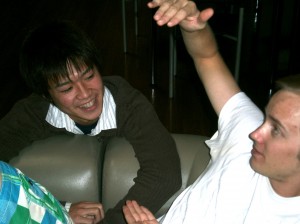
When he finally takes his face out of a textbook, he normally chooses to partake in athletics. His favorite to play is badminton and he often plays with a club at the university. If he’s not playing badminton he is normally asking someone to play catch ball with him. Shinpei loves playing catch ball, everyday of the week he extends an invitation to me to join him at the park and toss around a ball. He also enjoys playing sports just as much as he enjoys watching them. There have been plenty of nights where we would sit down on the couch in the seminar house and watch soccer, baseball, rugby and other sporting events on the television.
However, there are things about Shinpei that you can’t tell from just looking at him. Shinpei is very generous. He can always be seen extending a helping hand to the other roommates. He is very routine oriented and has a daily schedule that he rarely deviates from. Shinpei is a great person with some great qualities and anyone should be honored to be friends with him.
Posted in Uncategorized | 1 Comment »
October 24, 2011 by slater2
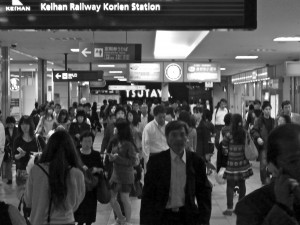 Korien Station is a moderate sized station along the Keihan Line that opened up in 1910. The station was originally named Kori Station, but in 1938 the station name was changed to its current name. This station is important because it serves the Kori-Minamimocho area of Osaka. At hours of high commute, the station can become extremely crowded, so it is serviced by all trains on the Keihan line, with the exception of the limited express train. After leaving the station, a person could easily get on one of the several busses that service the surrounding areas.
Korien Station is a moderate sized station along the Keihan Line that opened up in 1910. The station was originally named Kori Station, but in 1938 the station name was changed to its current name. This station is important because it serves the Kori-Minamimocho area of Osaka. At hours of high commute, the station can become extremely crowded, so it is serviced by all trains on the Keihan line, with the exception of the limited express train. After leaving the station, a person could easily get on one of the several busses that service the surrounding areas.
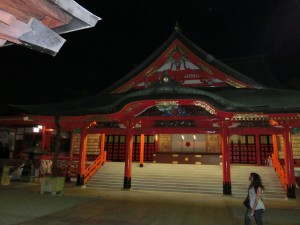
This Station is the closest station to the Nartiasan-Fudoson Temple, which is only a 15 minute walk away or a short trip on the bus. The temple is extremely beautiful and was a great taste of Japanese Culture. The Temple is know for traffic safety and according to Osaka-info.jp a group of 100 cars with passengers inside can be prayed for at the same time. At New Years, 30,000 cars are prayed for and over 200,000 cars are prayed for in the average year.
 In closer proximity to the station, is an area full of eateries. When you leave the station and walk into this area you are quickly welcomed by the aroma of traditional Japanese cuisine. At first, this area may seem overwhelming because the myriad of establishments, from Japanese to Italian, would quickly lead to indecisiveness among any group of hungry travelers. After grabbing a bite to eat, a visiting traveler could go shopping for fabrics and clothing at local shops, rent DVDs at the local Tsutaya, and grab a few delicious pastries at local bakeries.
In closer proximity to the station, is an area full of eateries. When you leave the station and walk into this area you are quickly welcomed by the aroma of traditional Japanese cuisine. At first, this area may seem overwhelming because the myriad of establishments, from Japanese to Italian, would quickly lead to indecisiveness among any group of hungry travelers. After grabbing a bite to eat, a visiting traveler could go shopping for fabrics and clothing at local shops, rent DVDs at the local Tsutaya, and grab a few delicious pastries at local bakeries.
Shopping and dining, however, aren’t the only things that Korien Station has to offer. The nearby neighborhood is filled with family homes and also showcases a large apartment tower. There is are number of schools that are relatively close to service the surrounding area. In the end, Korien station is an amazing place and once you arrive there, it is obvious as to why the station exists.
Posted in Uncategorized | 1 Comment »
September 30, 2011 by slater2
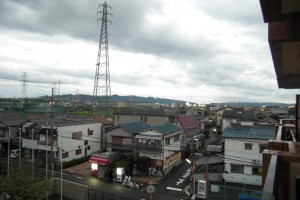 The area around the seminar houses is a place that I call home. This area however, is pretty different that anyplace that I have ever lived in before. The area is filled with elderly people and school age children. The neighborhood seems to be very quiet and peaceful, so quiet that the seminar houses actually disturb the neighborhoods natural harmony.
The area around the seminar houses is a place that I call home. This area however, is pretty different that anyplace that I have ever lived in before. The area is filled with elderly people and school age children. The neighborhood seems to be very quiet and peaceful, so quiet that the seminar houses actually disturb the neighborhoods natural harmony.
The houses seem to be like many other Japanese areas I have visited and their are a bunch of apartment complexes around. Their seem to be a lot of family homes. The family homes are occupied by the Hirakata locals, but the apartments tend to be occupied by students attending Kansai Gaidai. Their are also a couple shrines and a graveyard.
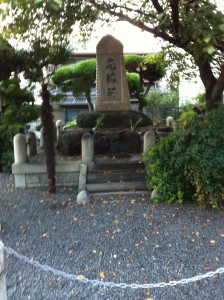 The people in the neighborhood don’t really seem to interact with each other as frequent as I have seen through my own living experiences. They do seem to be rather friendly and can occasionally be seen bonding at places such as the local park. In the park, people tend to bring their children to play and then they converse about daily life and news events. However, even though they seem to bond at the park, I have yet to see a group of neighbors visiting each others residence.
The people in the neighborhood don’t really seem to interact with each other as frequent as I have seen through my own living experiences. They do seem to be rather friendly and can occasionally be seen bonding at places such as the local park. In the park, people tend to bring their children to play and then they converse about daily life and news events. However, even though they seem to bond at the park, I have yet to see a group of neighbors visiting each others residence.
The people seem to be very friendly to foreigners. From my own experience, I was offered an umbrella by one of the local residents because she saw me walking down the street in the rain. The children all seem to enjoy talking to and meeting the Kansai Gaidai students and talking with them. The Gaidai students tend to be a big disturbance due to all the late night drinking and partying. The neighbors often complain about the noise the students make in their rooms.
In the end, the neighborhood surrounding the seminar houses is peaceful and good for the students because it gives them their first glimpse of Japanese culture and the people are generally friendly enough to interact with.
Posted in Uncategorized | 2 Comments »
September 16, 2011 by slater2
Upon entering Japan, I felt completely lost. I had endured a long and painful plane flight only to find out, that I am completely illiterate. The first struggle I faced was communicating. Even though I had studied a year of Japanese, I was put to the test of actually using it to communicate and I had failed. This brings me to one of the greatest things about Japan, the kind people. In my state of confusion and frustration, the local people were always happy to attempt to understand my flawed japanese and even use english to help me accomplish my goals.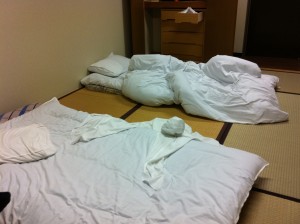 At first, I felt really strange because in America people are not as friendly and almost never offer to help me.Not only was I amazed by the people, but by the culture. The Japanese have a really trusting community and are filled with tradition. On my first bus ride, I was extremely confused. In Florida and New York City, the passengers of the bus are always required to pay upon entry, but this is completely different here. In Japan, you pay to ride the bus when you are getting off of it.
At first, I felt really strange because in America people are not as friendly and almost never offer to help me.Not only was I amazed by the people, but by the culture. The Japanese have a really trusting community and are filled with tradition. On my first bus ride, I was extremely confused. In Florida and New York City, the passengers of the bus are always required to pay upon entry, but this is completely different here. In Japan, you pay to ride the bus when you are getting off of it.
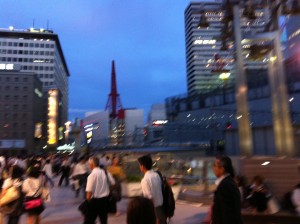
The next observation I made was that everything in Japan tends to be small, but I was wrong. It turns out that everything in Japan is either really small, like the futon that I’m to big for, or massive, like all the buildings in Osaka. I was born in New York City, but when I first entered Osaka I was literally in shock. The atmosphere there was completely different than anything that I had ever experienced. The buildings were enormous and for the first time in my life I felt incredibly small. In a matter of seconds, I went from being 6’3 and feeling like a champion, to feeling incredibly small and amused.
Posted in Uncategorized | 1 Comment »






 You and a group of friends can decide to get together in a boat and row down the Oi River.The boat itself cost 1400 yen for an hour of rowing, but it is worth it because it enables you to view the beautiful area around the river and also get an opportunity to watch the monkeys drink water and interact around the river. If you aren’t up for actually rowing a boat, you can get into a boat where you will be rowed down the river with a group of people. A boat will dock on the side of yours during the trip down there river and you will be able to buy snacks and refreshments.
You and a group of friends can decide to get together in a boat and row down the Oi River.The boat itself cost 1400 yen for an hour of rowing, but it is worth it because it enables you to view the beautiful area around the river and also get an opportunity to watch the monkeys drink water and interact around the river. If you aren’t up for actually rowing a boat, you can get into a boat where you will be rowed down the river with a group of people. A boat will dock on the side of yours during the trip down there river and you will be able to buy snacks and refreshments.




